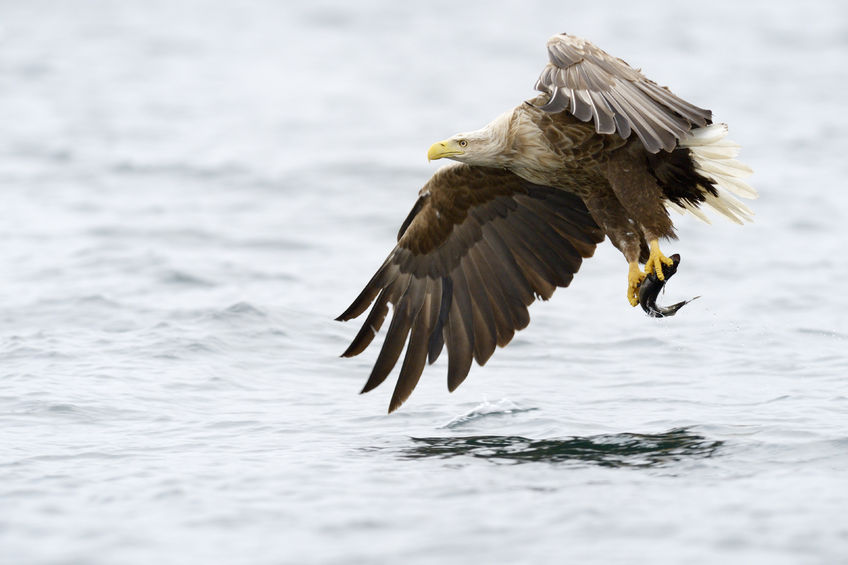
Scottish farmers have welcomed a new action plan on the management of white-tailed eagles, which they fear could 'threaten the future viability' of the sheep sector.
The report gives an insight into the work that is underway to deal with the problems caused by some eagles, and states clearly for the first time that they do predate healthy sheep and lambs.
Since their reintroduction, there has been a growing impact of the birds on sheep flocks in the west coast of Scotland, with many farmers experiencing significant losses.
One farm highlighted in the report demonstrated a loss of an extra 181 lambs in the period 2012-2018.
Post-mortem examination of a very small sample of lambs killed by white-tailed eagles also found most to have been fit and healthy when attacked rather than dead or unviable lambs, as some originally believed.
Depending on a range of factors, the white-tailed eagles population is predicted to continue to expand exponentially in the short term from its current level of 130 breeding pairs to several hundreds more over the next 20 years.
Figures on breeding pairs doesn't include the potential for a much larger number of juvenile birds as adult white-tailed eagles only start to pair when they are around five or six years old.
Increase in white-tailed eagles
The white-tailed eagle Action Plan was produced by a stakeholder group following an agreement between Scottish Natural Heritage (SNH) and NFU Scotland in 2014.
The groups aim to work together to find ways of limiting adverse impacts of white-tailed eagles whilst developing the right conditions for the sustainable co-existence between the birds and sheep farming.
NFU Scotland said it wants to ensure that the current work of farmers, crofters, and monitor farms to address the issue of predation are enhanced.
It believes that as the bird of prey population grows, the problems for farmers and crofters will only get worse.
'Unwelcome threat'
NFU Scotland President Andrew McCornick said predation by white-tailed eagles of lambs and, in some cases, adult sheep, is an 'unwelcome threat to their future viability'.
“That makes this a very emotive issue for those of our members affected by significant predation on their stock and we're committed through the collaborative approach with SNH and other stakeholders to identify solutions.
“With numbers expected to grow exponentially over the coming decades, potentially into the thousands when combining adult and juvenile birds, the impact on sheep producers will expand far wider than the current hotspots as they follow available food sources east and south.
He added: “All modelling on populations comes with significant caveats but one has suggested that, depending on conditions, there could be as many as 900 breeding pairs by 2040.”
